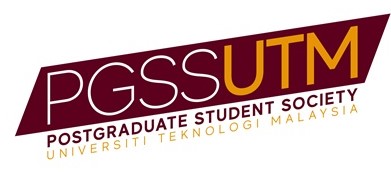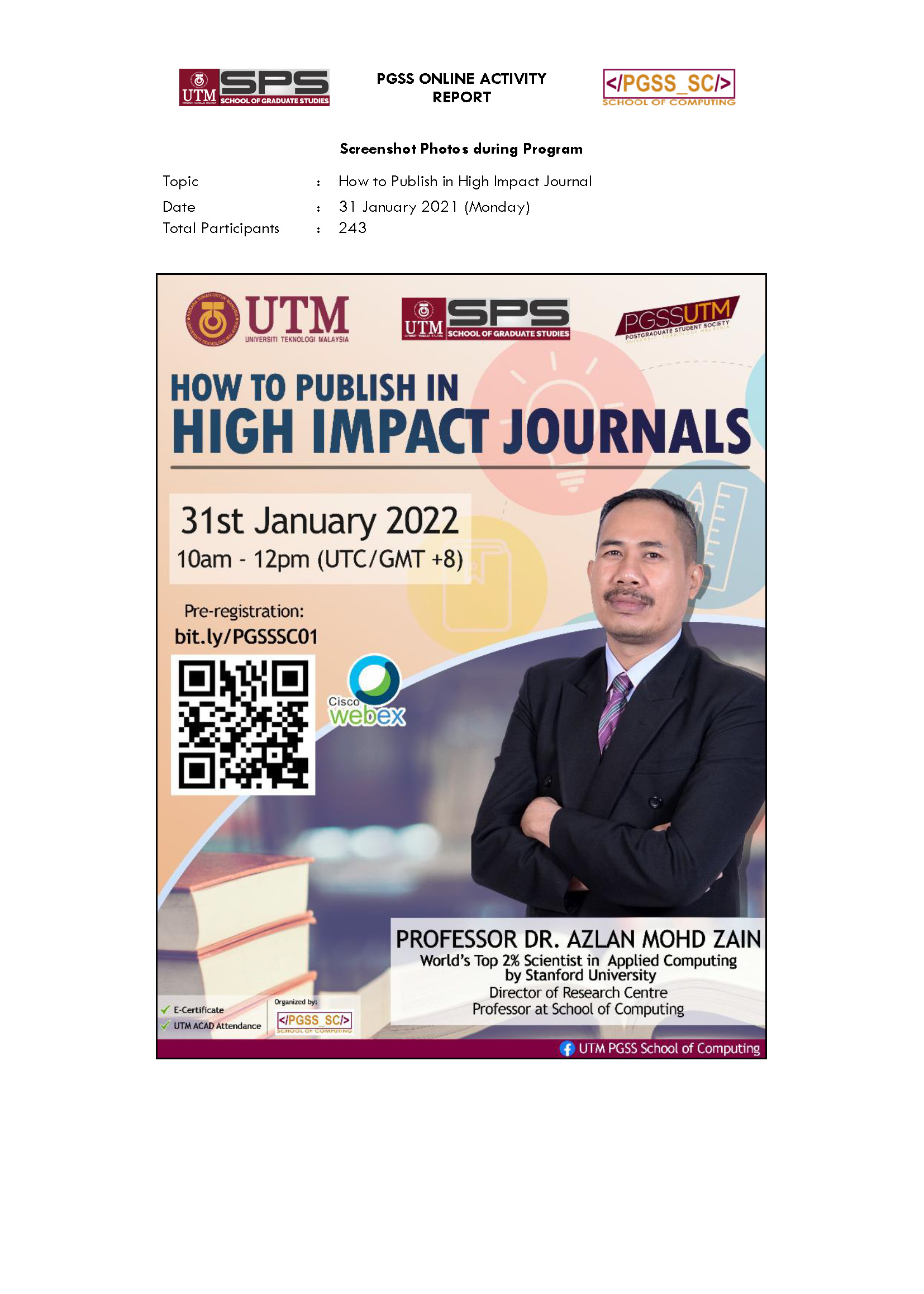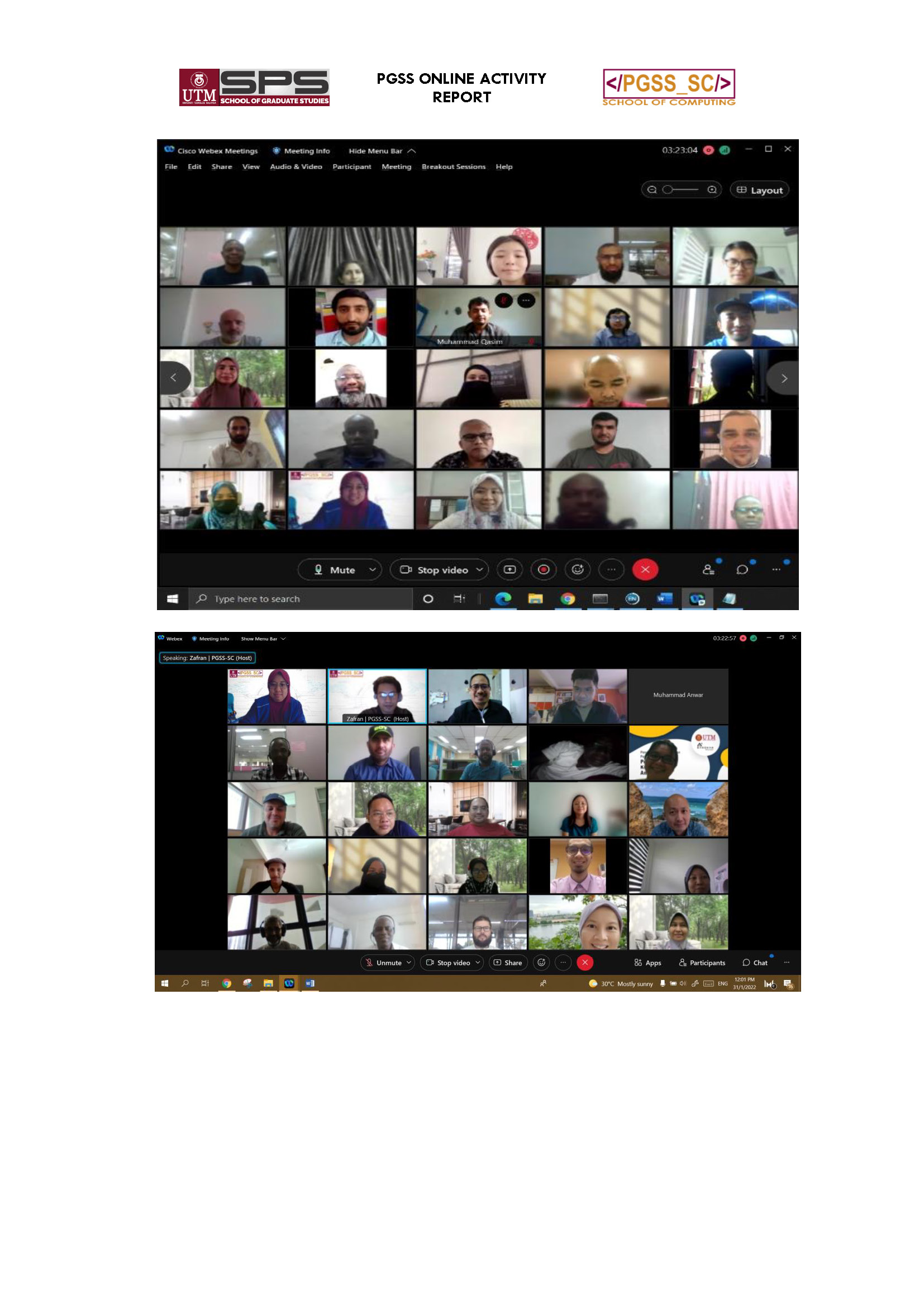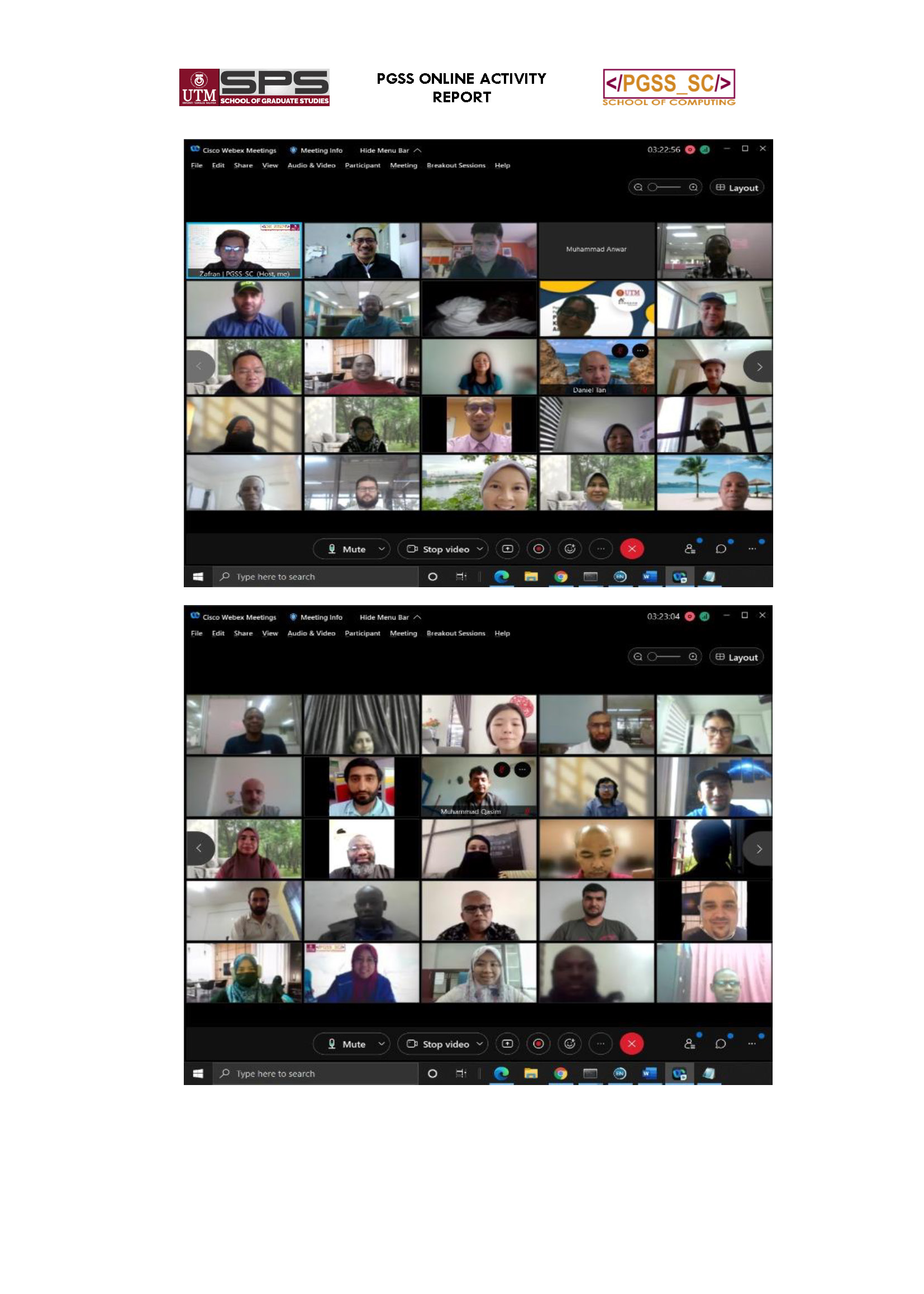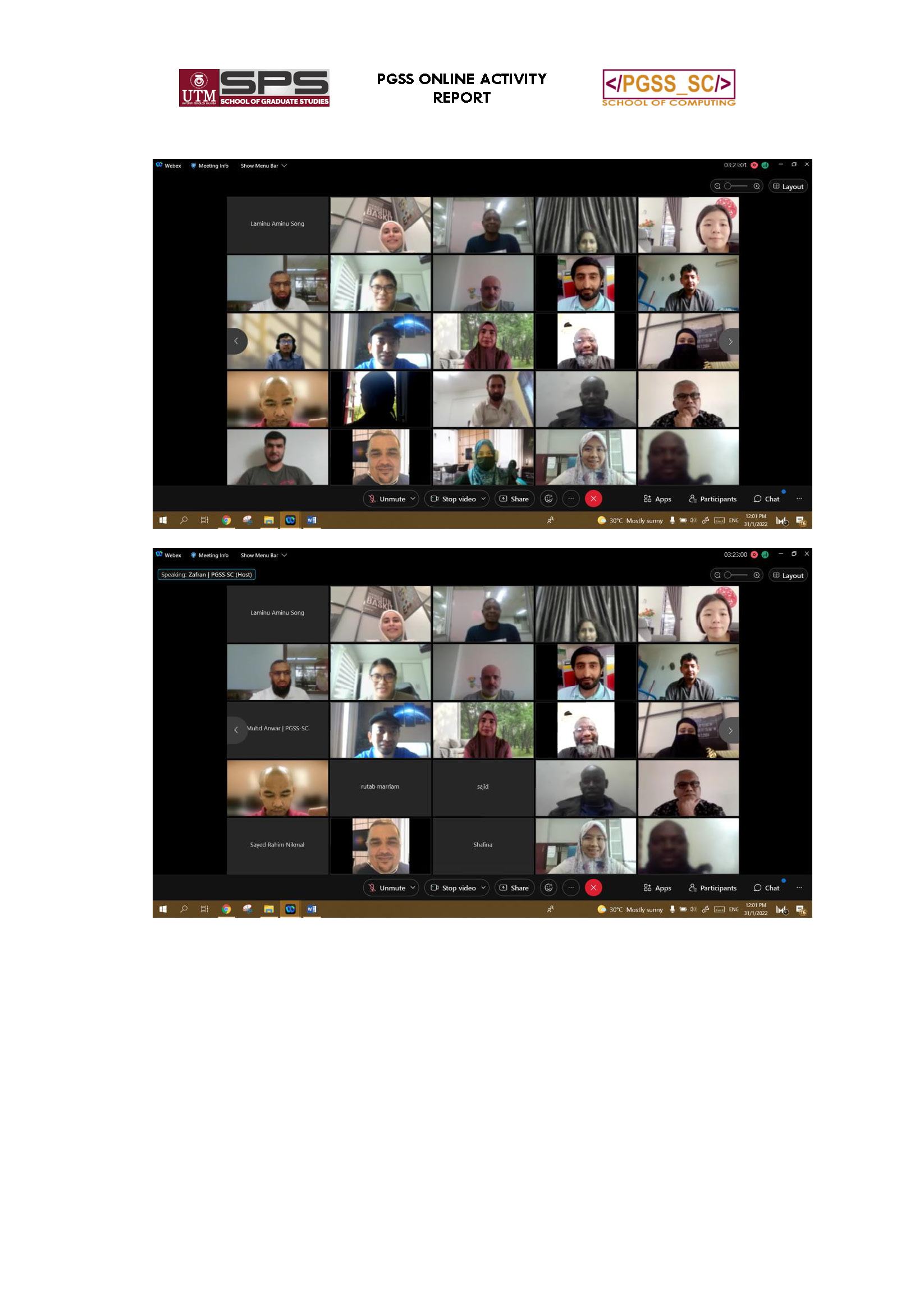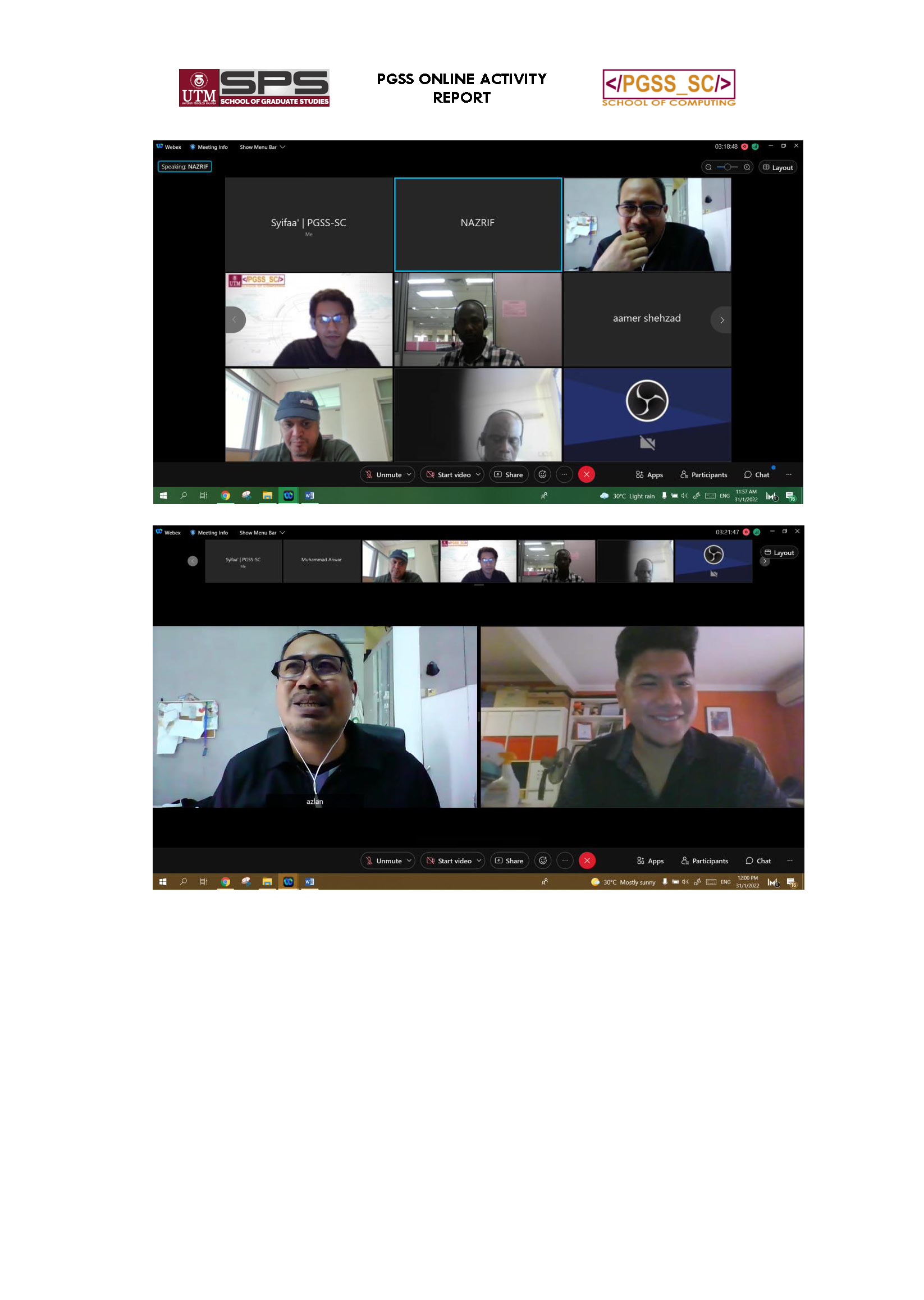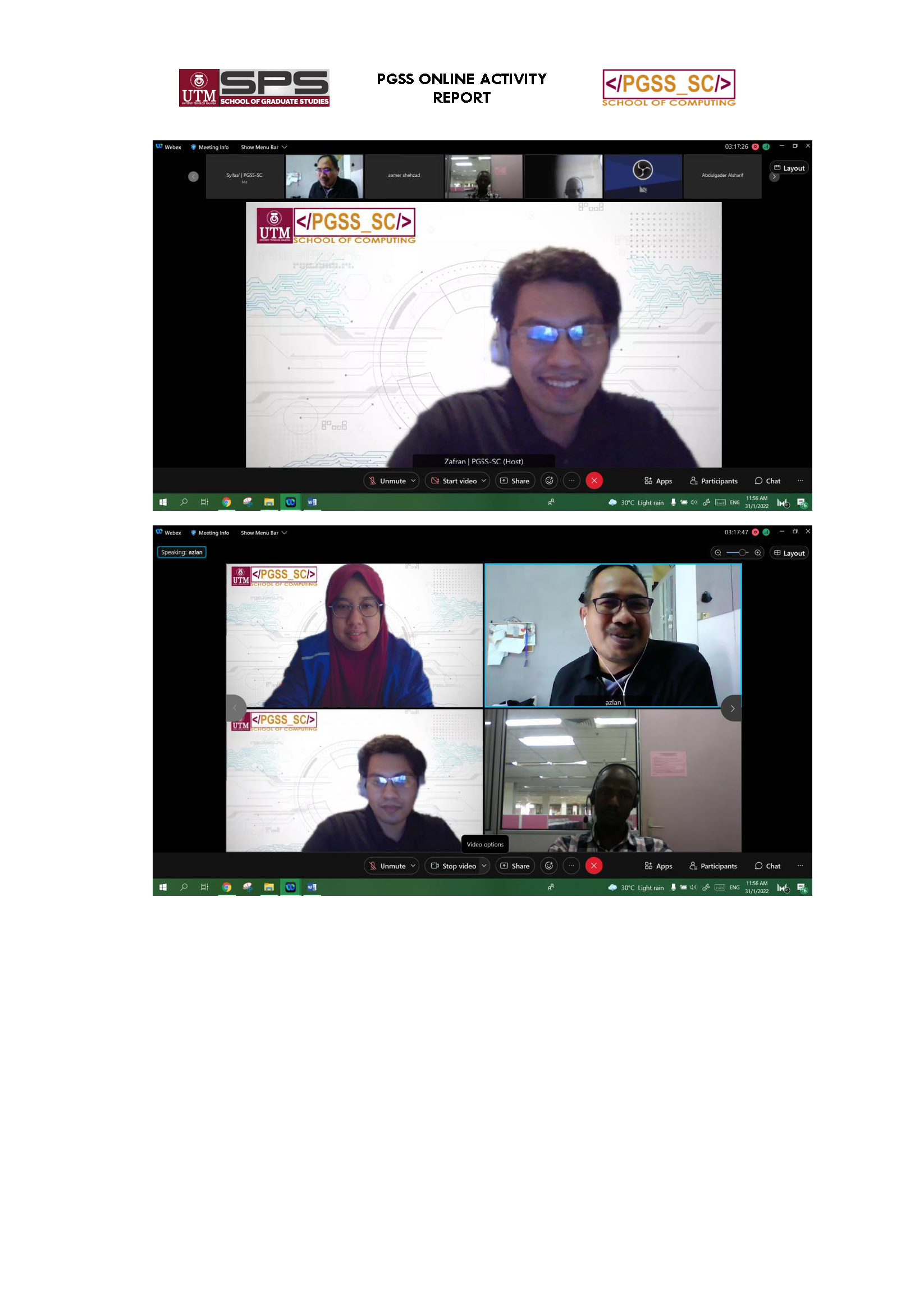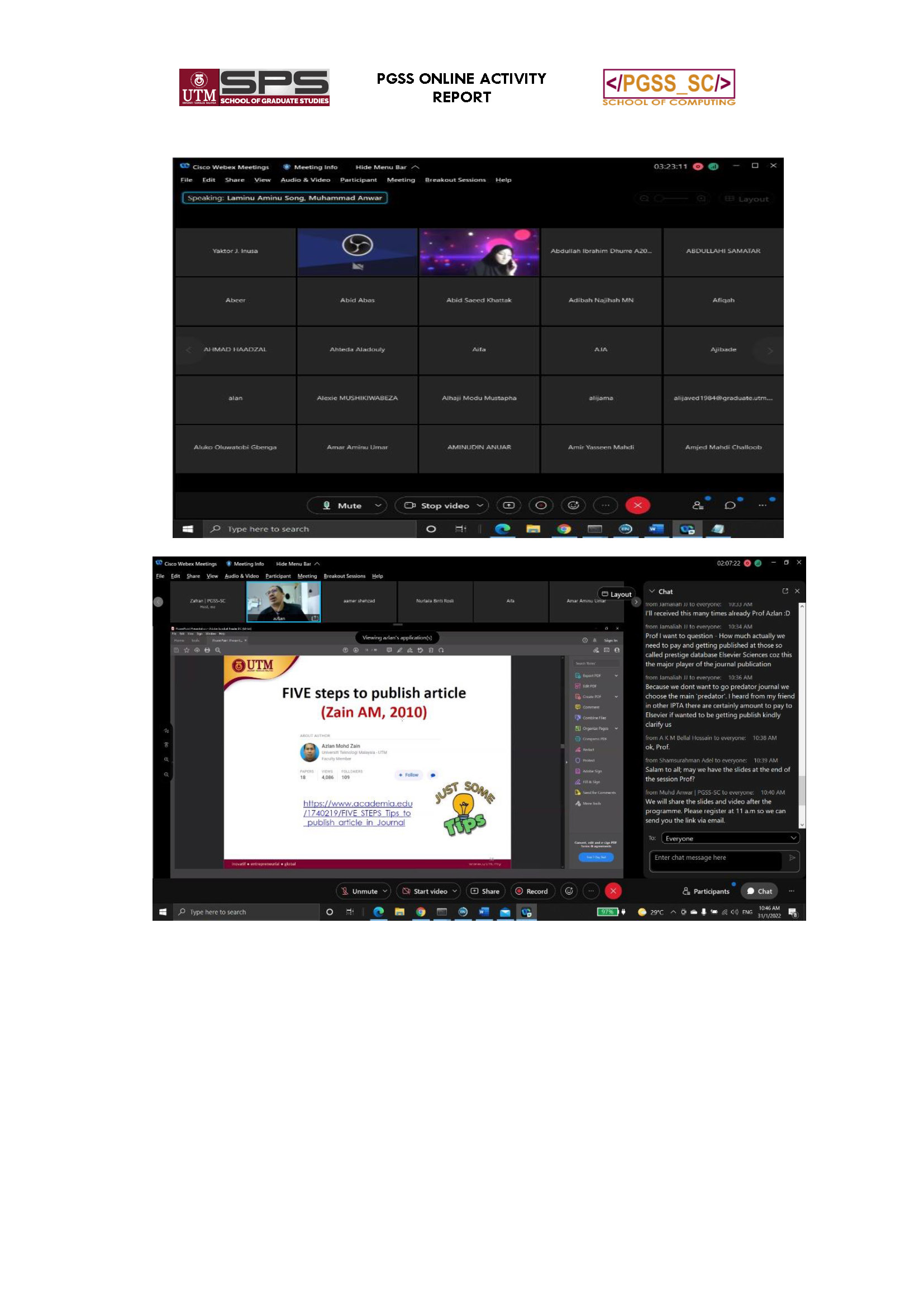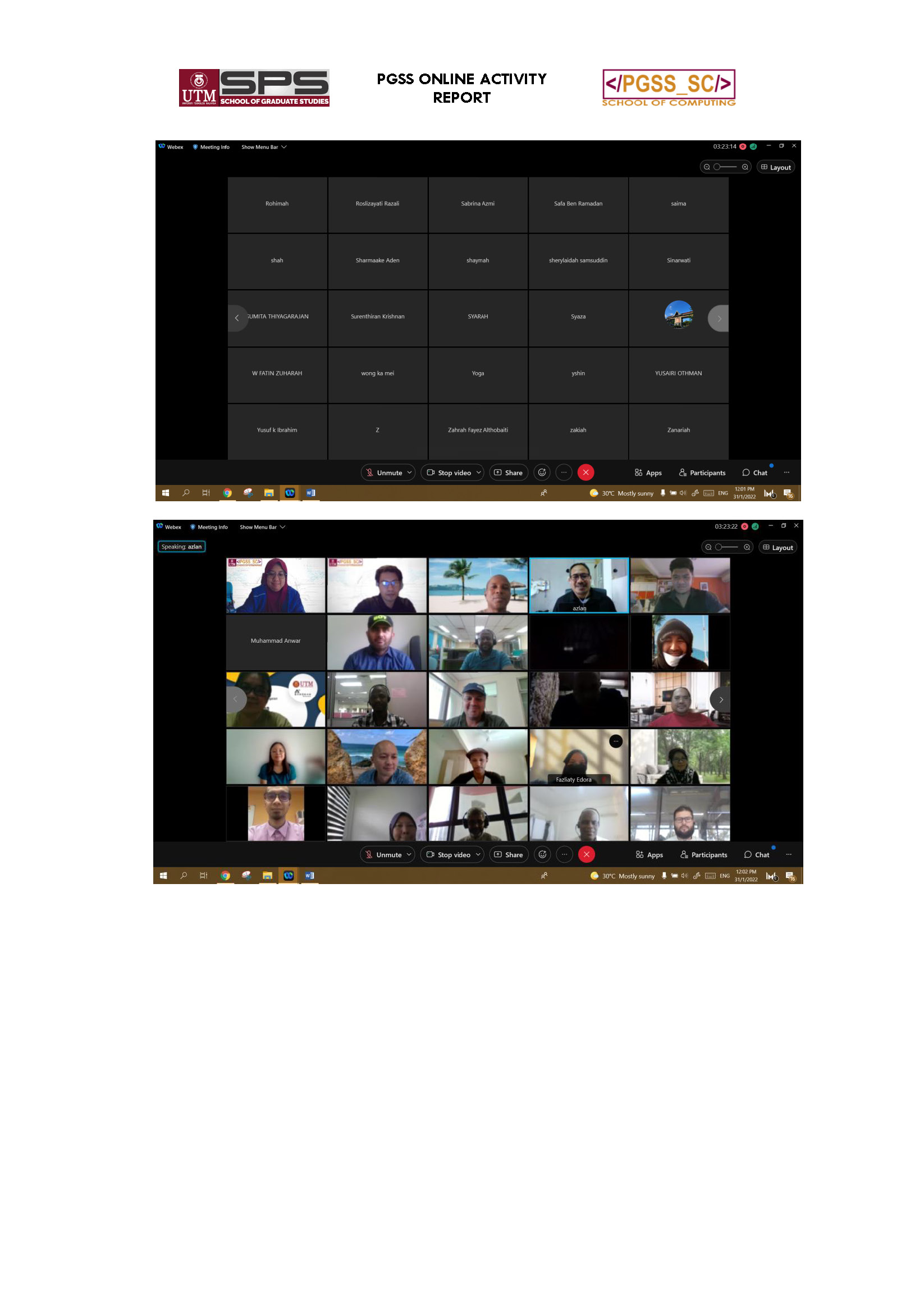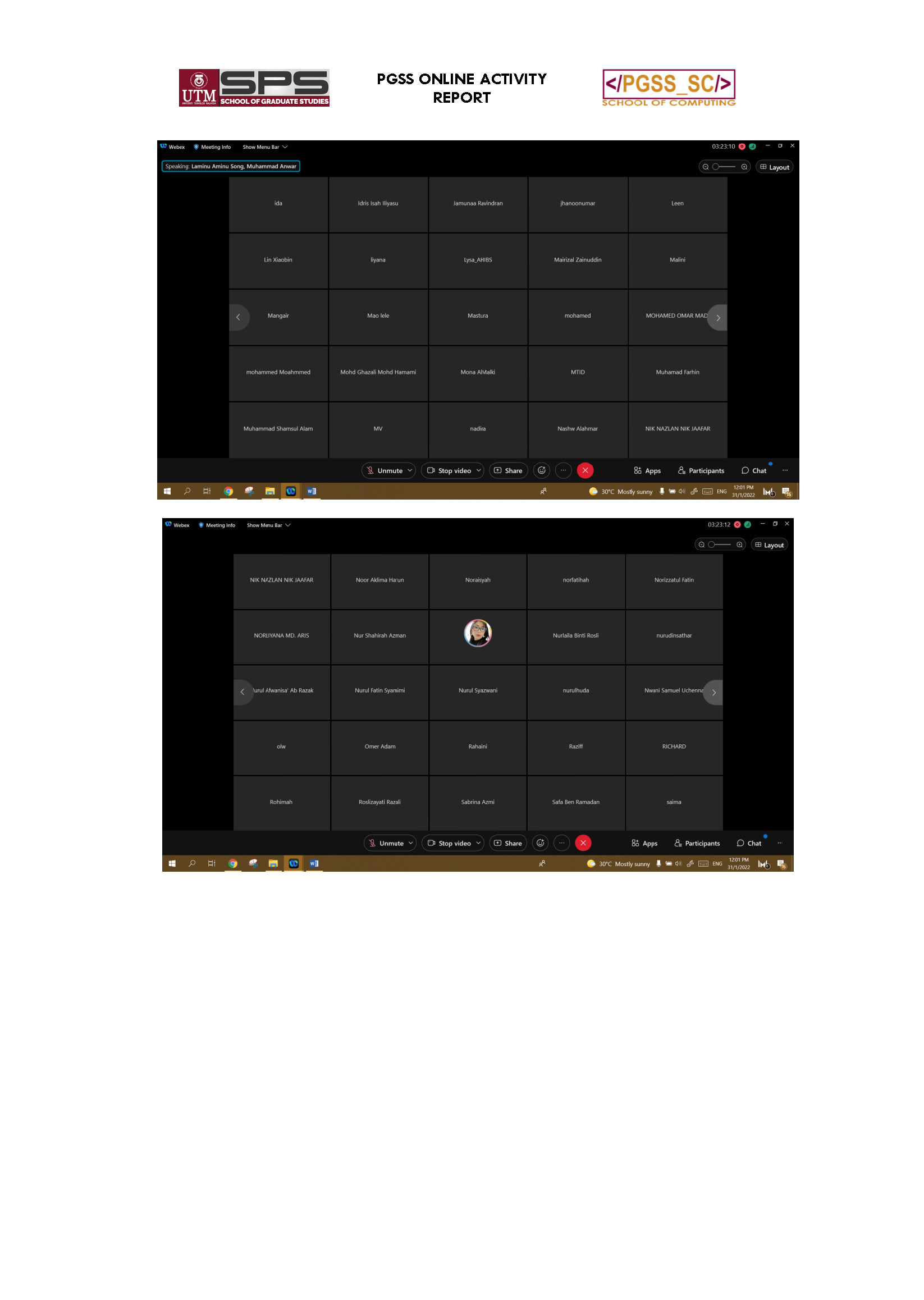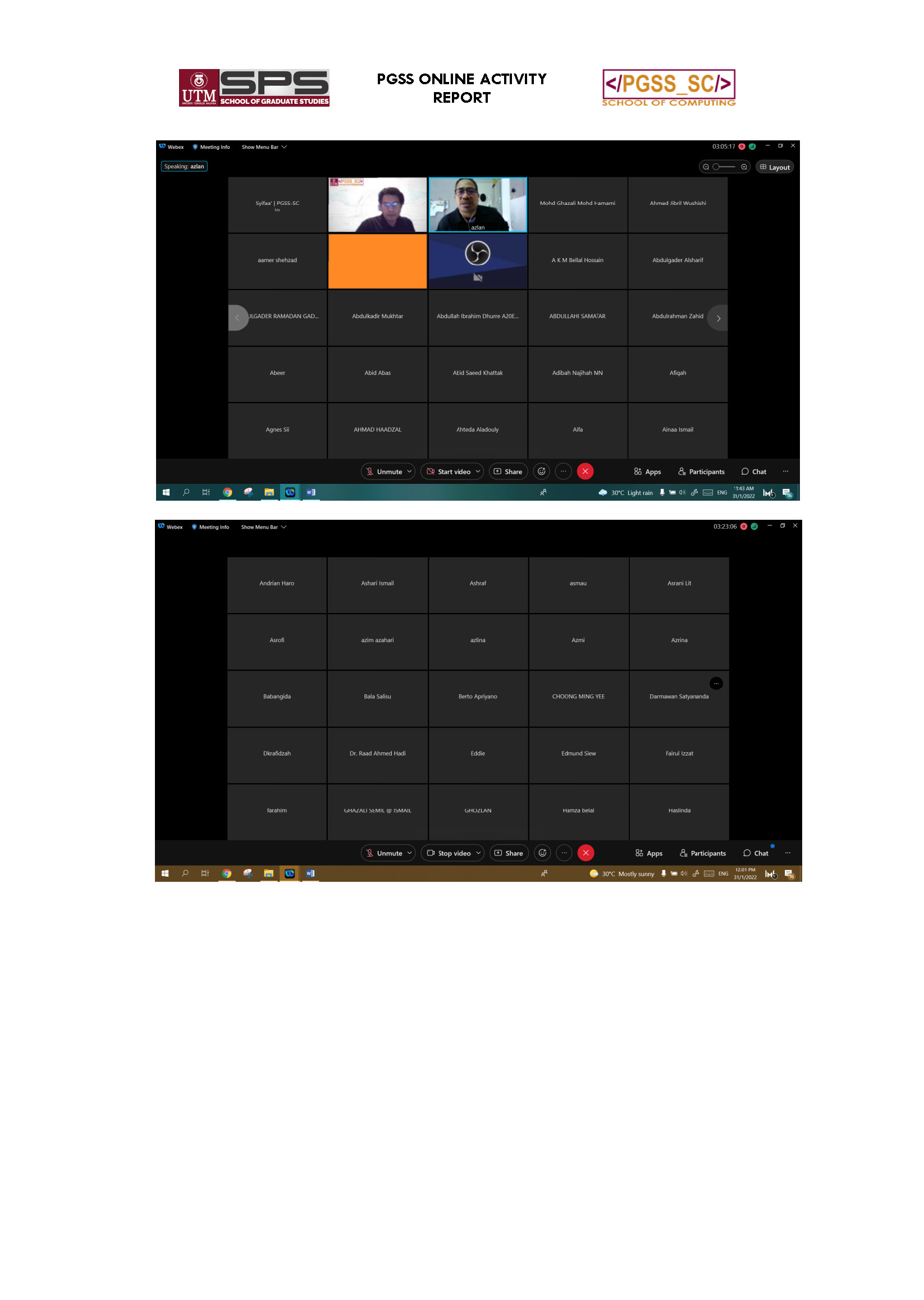On 31st January 2022, an online structured course How To Publish In High Impact Journals was organized to share on publishing research articles in high impact journals. The structured course started at 9.00 am and ended at 11.40 am using Cisco WebEx online conferencing platform. This course was organized by the Postgraduate Student Society School of Computing (PGSS-SC), with Muhammad Zafran Muhammad Zaly Shah as the moderator. This session was successfully held with the PGSS-SC committee’s help, Asraful Syifaa’ Ahmad, Muhamad Farhin Harun and Muhammad Anwar Ahmad.
This course received 461 online registrations, and there were 243 participants who turned up for the event that had registered. There are 75.3% Ph.D. level participants, 22.2 % Master degree level participants, and 2.46 % Bachelor level participants, and the rest are unidentified. We also received participation from UTM staff. Additionally, 85.1% are from UTM, and the rest is non-UTM.
The honorable speaker for the program is Prof. Dr. Azlan Mohd Zain. He is a professor at School of Computing and has been serving UTM since June 1997 and currently holds a position as Director of Research Centre at UTM Big Data Centre. Prof. Azlan also holds positions as editor in chief, editorial board, chairman and also a part of committee for various journals and conferences. He is an active researcher with more than a hundred publication, copyrights and numerous projects. Most of his projects have granted him various awards in UTM and also external grants. According to SCOPUS websites, Prof. Azlan has 110 articles and been cited by 1892 documents.Not only that, Prof Azlan has numerous past and current successful postgraduate under his supervision. According to UTM Scholars’s website, Prof. Azlan has a total of 45 students in his supervision, where out of that 24 are PhD students.
The workshop starts at 10 am with the moderator briefly introducing the speaker, Prof. Azlan’s background and achievements. Then, the floor was given to the speaker and he started with a more insight to his current background. He then proceeded to open his talk with a statement on the publication dilemma in which he emphasized that it is fine to be rejected for a few times before it is being published as long as the author keeps on polishing it. He also stated his main objective of the talk which is to motivate the participants on being optimistic when trying to publish an article. Then he shared some of UTM’s achievements and rankings on publications. He also highlighted the importance of citation as the measurement for high impact journals.
On the next section of the talk, he stressed again on being optimistic when the article gets rejected. He shared the statistics on rejection, in which out of 500,000 article reviews, 40%-90% usually gets rejected (Alsina D, Elsevier Amsterdam 2014). He also listed the usual reasons why articles get rejected, such as the does not fall within scope, not a hot topic, not up to date or no novelty). The speaker advised to keep resubmit and revise until accepted, as 62% of published papers were rejected at least once. He also mentioned on poorly written articles and suggested having the article to get proofread to ensure the grammar and sentence structure is up to standard. He also advised to check on plagiarism, journal formatting requirements and quality of writing.
He then shared some steps when trying to publish, which is preparing the article, identifying the suitable journal, sending process, waiting on feedback and do corrections if needed. He gave some tips on speeding up publishing by submitting to Open Access (OA) journals but also warns to avoid predatory OA journals. He then showed a checklist when looking for suitable journals. The next strategy he mentioned is that the main idea comes from a good thesis, therefore the thesis should be convertible to articles. There should at least be 4 articles to come out from a thesis, which is review article, and one each from objectives. Finally, he shared the structure of a scientific paper, which follows the IMRaD model (Intro, Method, Results and Discussion). He provided a detail explanation an showed examples of articles using the aforementioned structure.
The speaker’s session ended around 11:40 am. Afterwards, a Q&A session was held until the end of the structured course at 12pm. The questions were collected throughout the event from the chatbox and voiced to Prof. Azlan by the moderator. There were many excellent questions and the speaker manages to answer almost all the questions, with the remaining unanswered due to time constraints. To wrap up the course, a photography session was held and the moderator took screenshots of all the participants.
Overall, the structured course was held without any major issues. However, the Q&A session had a participant asking directly instead of posting in the chatbox which interrupted the flow of the moderator. Nevertheless, it was not dragged out and the moderator was able to regain control afterwards.
To conclude, the participants appreciate all the efforts by the SPS UTM and PGSS SC as the organizers. Additionally, 233 out of the 243 participants rate this structured course 4 and 5 stars in terms of the overall rating. This course outcome will give a boost to motivation for PGSS SC to organize more workshops like this.
